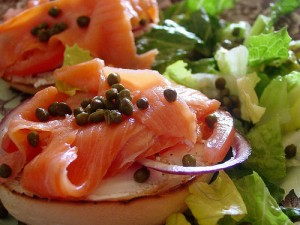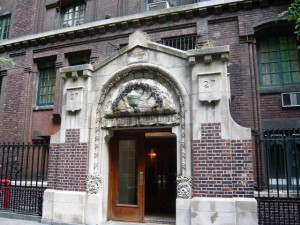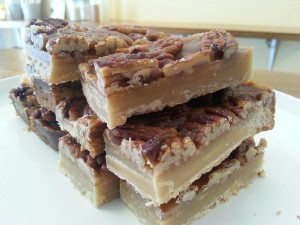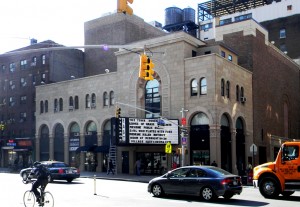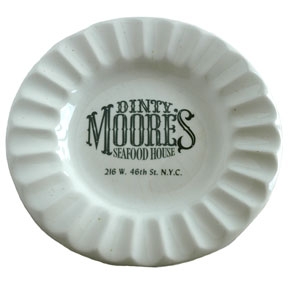Mark Bittman has a nice opinion piece in the New York Times about the perennial Holy Trio (pardon the sacrilege) of Jewish comfort food: Lox, Bagels, Cream Cheese. HG is a bit of a contrarian and curmudgeon on this subject. HG loathes bagels. HG shares this dislike with his late parents, both Jewish immigrants from Belorussia. Every Sunday morning throughout HG’s childhood, HG and his father would stroll to West Kingsbridge Road in The Bronx. They would separate. Father went to the “appetizing” store for Nova salmon, sable, sour pickles, black olives, cole slaw and potato salad. HG went to the bakery for bialys, onion rolls (pletzels) and sliced Jewish rye bread. (Mom had gone to Daitch Dairy the day before for cream cheese and baked farmer cheese). HG picked up the Sunday Times, Sunday News and the Yiddish-language Jewish Daily Forward. Home for the feast at a table with a steaming pot of coffee, a pitcher of freshly squeezed orange juice and a bottle of Hennessy Brandy. A morning of down home Jewish culinary delight. And, not a bagel in sight.
Bagels? Feh!
May 4th, 2014 § 0 comments § permalink
27 W. 67th
April 27th, 2014 § 0 comments § permalink
Like the Huns and Visigoths sacking Rome, the Yups swooped down on Manhattan’s Upper West Side and destroyed scores of Mom-and-Pop shops, idiosyncratic, eccentric and full of flavor. Only big time operations can afford today’s rents (HG has written about the hapless search by a woman who wanted to open a bookshop in the neighborhood and found nothing that rented for less than $40,000 a month). HG/BSK began their life together in May 1963.Their residence was an artist’s studio in 27 W. 67th Street, a building constructed by a group of artists (Childe Hassam among them) in 1903. The HG/BSK connubial nest consisted of a big, high ceilinged studio with a wide expanse of windows awash with north light. Modest sized kitchen (big enough to accommodate a dining table). Bathroom with a giant tub. Small bedroom (once a changing room for models). A romantic apartment on a block renowned for the arts. (The Hotel Des Artistes was next door.. The restaurant in the Des Artistes featured gently naughty murals by Howard Chandler Christy and the building housed at times such luminaries as Noel Coward, Robert Lowell, Elizabeth Hardwick and Fanny Hurst). The rent for HG/BSK’s urban paradise was $147 a month. The 67th Street liquor store was on the corner and sold very good splits of champagne for $1.25. Nice little grocery/delicatessen on Columbus Avenue dispensed good bread, freshly made soups and salads. A short walk to good, affordable restaurants–Fleur de Lis for French food and Volk’s for German food. And, yes, Zabar’s was in business on Broadway, just a modest Jewish “appetizing” store, not the food megalopolis of today. West Side memories swept over HG today as HG examined a full page ad in the April 24-May 4 issue of New York Magazine. “27 W. 67TH STREET” was the headline. The ad detailed the glories of a duplex apartment in the building. The price: $4,950,000. “Hey, HG,” mused BSK, “If you’ve got a spare $5,000,000 tucked away somewhere we could buy it and start over again.”
Pecan Bars At Panade: An SJ Posting
April 10th, 2014 § 1 comment § permalink
SJ Here. For the last two months I have been on a quest to change the meaning of my “S” to skinny. This has meant avoiding sugars, pasta, bread, starches, etc., like a truly modern (and unhappy) man. For the most part the temptations have been negligable (although I have been dreaming of steaming bowls of Pasta laden with anchovies and garlic) except for one: the Pecan Bars (dubbed Crack Bars by those in the know) served up at my local coffee spot, Panade. Panade is one of the great neighborhood spots — a fixture of North Chinatown / LES — with an owner, Yvette, who not only serves up great coffee, “puffs,” and sandwiches but is also a true emissary of our hood: everyone knows her, she knows everyone and thus the disparate worlds of Chinatown are melded in her small storefront. Every morning when I get my coffee a display of these Pecan Bars mocks me — they are the perfect baked good — nutty with pecan goodness, rife with the flavors of butter and toffee, moist and slightly chewy. Sweet, but not cloying. Nothing beats them as a mid-day treat (or mid-morning or mid-night or mid-dusk or in the mid of really anything) and they raise a mighty alarm to my will power every day that I force myself to go without. So, generous soul that I am, if I cannot have them I would like to entreat all you loyal Hungry Gerald readers to make a trip south of Delancey and try the vaunted Panade Pecan Bar — truly the best cookie in New York City.
Franny’s. Simple. Seasonal. Italian.
April 7th, 2014 § 0 comments § permalink
That’s the title of a wonderful cookbook, a Christmas gift from thoughtful SJ. Franny’s, of course, is the Brooklyn restaurant owned and run by Francine Stephens and Andrew Feinberg. HG dined there a few years ago. Best cured meats, salumi and pizza HG ever tasted. Franny’s has become a mini-empire and success has been based upon Stephens’ and Feinberg’s watchwords: Simple. Seasonal. Italian. The original Franny’s on Flatbush Avenue has moved to a larger space. The original space is now occupied by the couple’s trattoria, Marco’s. (They also operate a food market, Bklyn Larder). The Franny’s cookbook is beautifully written and illustrated, filled with appetizing ideas. HG/BSK cooked Franny’s version of penne with zucchini and mint a few days ago. (Hadn’t previously known how mint enhances zucchini). A beautiful dish when topped with a goodly splash of extra virgin Sicilian olive oil. Tomorrow HG/BSK will cook Franny’s paccheri with swordfish, olives, capers and mint. Paccheri is a tubular pasta (literal translation from the Italian is “a slap in the mouth”). HG/BSK will use rigatoni (easier to find).
Flaming Rents Burn New York Book Stores
April 5th, 2014 § 2 comments § permalink
When HG was young, New York was a city of bookstores. There was the grand Scribner’s on Fifth Avenue and Brentano’s, also a Fifth Avenue book landmark. The 8th Street Bookstore in the Village was where HG’s late, lamented friend Peter Alan Meyerson, the Hollywood comedy writer, worked after college. The Village was filled with bookstores catering to a variety of tastes: political, erotic, artistic, perverse. Fourth Avenue (later renamed Park Avenue South by the same pretentious vulgarians who dubbed Sixth Avenue as Avenue of the Americas) was lined with used bookstores. HG, sometimes joined by a young SJ, browsed their shelves on many happy days and bought the books that were the foundation of the HG/BSK library. HG’s favorite bookstore was the Gotham Book Mart at 41W. 47th Street. Frances “Fanny” Steloff opened it in 1920. Imperious and irascible, Fanny loved books and writers. It was a hangout for almost every literary luminary of the 20th Century. Delmore Schwartz, Gore Vidal, Tennessee Williams, W.H. Auden, Woody Allen, Stephen Spender and scores of other novelists, poets, critics and playwrights made it their hangout. There were poetry readings and novelists would often preview their works in progress. Fanny held parties for visiting literary figures from overseas (such as Osbert and Edith Sitwell). Fanny sold the shop in 1967 but continued to live in an apartment on the 3rd floor of the shop. She died in 1989 ate the age of 101. The shop (in a new space on W. 46th) closed in 2007, one of the last glorious independent, individualistic, eccentric New York bookstores. HG’s other favorite haunt was a small shop on 23rd Street that specialized in publishers’ overstock and cut rate art and design books. The owner, an erudite left wing gentleman, played Mozart and Bach on the shop’s sound system and gave HG steeps discounts on HG’s purchases of Skira and Abrams art books. HG recalled all of this as he read in the New York Times that New York bookstores are disappearing. Yes, Hitler burnt books and New York’s rapacious landlords are emulating him by eviscerating bookstores (and other irreplaceable neighborhood treasures) with outrageous rent demands. A young woman, the Times reported, who wanted to open a small bookstore on the Upper West Side, could find no space for less than $40,000 a month. New York has already lost more than a third of its bookstores. Surely there must be some sort of municipal government action (subsidy, etc.) to prevent the loss becoming even more dire. How can a city that calls itself the cultural and creative center of the world do nothing as its bookstores are driven out of business?
Spud Heaven
March 31st, 2014 § 0 comments § permalink
The best potato dish ever devised by humankind is pommes souflee. These airy, crisp bits of spud heaven are a testament to culinary creativity. The method of preparation is a double frying of potatoes and requires efficient temperature control and deft hands. As mentioned in a previous post, HG always enjoyed them at the old Oak Room in New York’s Plaza Hotel. In London, HG consumed them accompanying a toothsome mixed grill in the restaurant of the Connaught Hotel ( In its heyday, despite its English location, it was hailed as the best French restaurant in the world). However, the best pommes souflee were found at the long closed, aptly named Charles a la Pommes Souflee on New York’s E. 55th Street. Second helpings were encouraged. HG took advantage. Sadly, pommes souflee have virtually disappeared from New York, Paris and London menus. There is one place to taste them in all their glory. This means a voyage to Paris and a visit to Au Boeuf Couronne, a venerable steak house in Paris 19e. Order a saignant (rare) steak topped with either sauce bearnaise or beef marrow. A big side of the lush taters. Clog your arteries with pleasure.
Cafe Royale
March 28th, 2014 § 0 comments § permalink
The Cafe Royale, ah, the Cafe Royale!! Few people (and they are few, mainly men and women in their 90’s) who can say those words without a warm smile. The Cafe Royale had a long run: 1908-1952. It was located in New York on the corner of Second Avenue and E.12th (now a movie theater). For much of the cafe’s history, Second Avenue was the home of the Yiddish theater. There were numerous theaters and vaudeville venues. Stars galore: Jacob Ben Ami; Jacob and Celia Adler (their relations included Luther and Stella); Maurice Schwartz; Molly Picon; Menasha Skolnick. Aaron Lebedoff, Leo Fuchs and Moishe Oysher were vaudeville luminaries. Munii Weisenfreund (he changed his name to Paul Muni) and Walter Matthau were among the many actors who left the Yiddish theater to attain fame on Broadway and in Hollywood. HG only visited Cafe Royale in its final year — 1952. It was a sad place then, inhabited by old Yiddish actors bewailing (over numerous cups of tea) the death of a once vigorous theater. In its heyday, the Cafe Royale was the Yiddish Sardi’s—a schnapps and schmaltz fueled joint that teemed with Yiddish-speaking performers, composers, producers, set designers, musicians, press agents, dancers, playwrights—plus ardent fans and hangers on. It was one big Yiddish schmooze-fest and kibbitz. According to HG’s older friends, the Cafe Royale was the scene of theatrical feuds, naughty romance and artistic argument. The food and drink were savory. Voices were loud. Waiters were irascible. Hy Kraft, screenwriter and playwright, wrote a play about Cafe Royale, Cafe Crown. It opened on Broadway in 1942. Directed by Elia Kazan, it had a four month run. Kazan didn’t think much of Kraft as a playwright but said “He had a talent for the Jewish anecdote.” And, the play is as stuffed with Jewish jokes and anecdotes as an old Cafe Royale patron sitting back after a meal of chopped liver and Hungarian goulash. Joe Papp of New York’s Public Theater was fond of the Cafe Royale, the Yiddish theater and Cafe Crown. He revived the play in 1988 in a production starring Eli Wallach. Cafe Crown had another life in 1964. Kraft adapted it as a musical and HG/BSK went to the opening night. HG/BSK were pals with theater folks close to Kraft. The musical was not a success but it introduced a very engaging young actor, Alan Alda. HG/BSK joined Alda and his wife at Sardi’s for a post-theater dinner and found him to be a modest and amusing young man, surprising in someone whose star quality was so evident. Hy Kraft (he wrote it with Johnny Mercer) had a big hit in the Broadway musical (later a movie) Top Banana. It made Phil Silvers a star. Hy Kraft was an indomitable liberal. He defied the Red hunters and was blacklisted in Hollywood. Later, he battled against the American presence in Vietnam. The tragedy of his life was the early death of his daughter, Jill, a lovely and talented ingenue.
Secret of A Good Paris Steak: Imported Meat
March 25th, 2014 § 0 comments § permalink
When HG wanted to get some vigorous jaw exercise in Paris, HG ordered a bavette (flank steak) or an onglet (hangar or butcher steak). Tough? These were broiled baseball mitts. Well, it seems times are changing and the outlook is rosy (or bleu or saignant) for the Paris steak eater. The French, supremely nationalistic about their cuisine, are finally making an admission: French beef can be admirable when long cooked as pot au feu or boeuf bourgignon. But, served as steak French beef is usually tough and tasteless when compared to imports from Germany, Scotland, Argentina and the United States. That’s why more than 20% of meat presently served in French restaurants is imported. And, that number is rising. Good Paris steakhouses like Le Severo and Au Boeuf Couronne now depend on imports. You can get a nice steak at those places (Severo’s frites are exemplary and Boeuf Couronne serves hard-to-find pommes souflee). But, if you want really great steak nothing beats a traditional New York eatery like Spark’s and Keen’s Chop House (yes, Peter Luger’s is good but a tad overrated). HG believes New York’s restaurateurs reserve the best cuts in the world for themselves.
Stick-To-The-Ribs Eating
March 22nd, 2014 § 0 comments § permalink
Yes, that was the descriptive phrase for heavy, high-cal, stratospheric cholesterol, cheap food devoured by HG in New York during his college days. A real belly buster was mofongo, found in Puerto Rican restaurants in East Harlem, South Bronx and Broadway in the 140’s. Mofongo consisted of mashed, fried plantains (green bananas) formed into a big dumpling shape and served in a bowl of broth with garlic, olive oil and cuchifritos (pork cracklings). HG also ate big bowls of thick skinned potato pierogi with sour cream in Polish restaurants on lower First Avenue and giant plates of ground pork stuffed cabbage at Ukrainian restaurants in the same neighborhood. In African-American Harlem, HG feasted on fried catfish and ribs with mac-and-cheese, gravy doused rice and greens enriched by ham hocks. In the Mott Haven neighborhood of The Bronx, Mom-and-Pop Italian restaurants served bowls of spaghetti with oil and garlic of a size designed to appease the appetite of guys who worked all days with their hands and strong backs. Prices for these aforementioned treats ranged from 75 cents to $1.75.
Dinty Moore’s: Irish/Jewish and All Good
March 19th, 2014 § 4 comments § permalink
St, Patrick’s Day has come and gone and tons of nasty corned beef and cabbage have been consumed. Irish bacon and greens was the traditional holiday dish in Ireland. This got converted to corned beef and cabbage in the United States (HG doesn’t know when). Anyway, today’s inebriated Paddy’s Day revelers eat stringy corned beef (injected with lots of chemical tenderizer), limp cabbage and sadly overdone boiled potatoes. HG’s late Mom would comment: “Feh!!”. There was a time when corned beef and cabbage was a gourmand dish and it was served at Dinty Moore’s, an Irish restaurant on W. 46th Street in New York’s theater district. James “Dinty” Moore opened the restaurant in the 1920’s. Closed in the early 70’s. If Lindy’s and the Stork Club were identified with Walter Winchell, the powerful columnist and radio personality, Dinty Moore’s was identified with Louis Sobol of the Journal-American, the kindest and gentlest of the Broadway columnists. James Moore was the favorite restaurateur of the theatrical and sporting gentry because he defied Prohibition. He ignored it. It was always business as usual at Dinty Moore’s. Moore was often hauled into court but he paid his fines with a smile and kept serving good strong spirits. As the years rolled by, Moore recognized the fact that many of his customers were Jewish. He added gefilte fish (much better than HG’s Mom’s version) to the menu and the Irish lamb stew, beef stew and liver and onions were always made with kosher products. (The rasher of bacon that accompanied the liver and onions was decidedly non-kosher). Prices were high but were paid uncomplainingly because everything served was of the highest quality, plainly cooked and not disguised by intricate sauces. The signature dessert was rice pudding. It was sublime. It was a favorite of Jimmy Cannon, the eloquent sports columnist. A number of generations have grown up seeing Dinty Moore’s Beef Stew on supermarket shelves. No connection with the restaurant and HG doubts if it tastes anything like the wonderful New York food HG consumed at Dinty’s.
